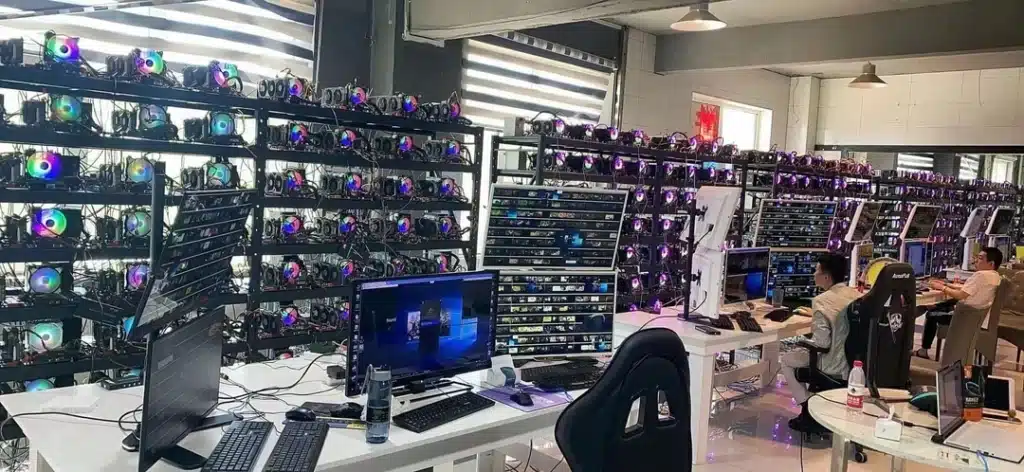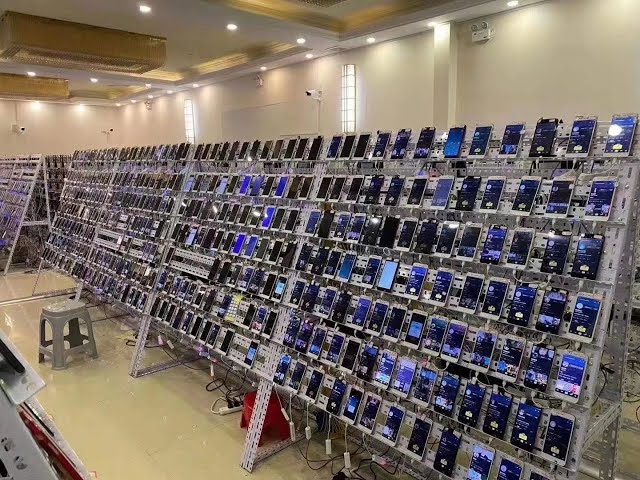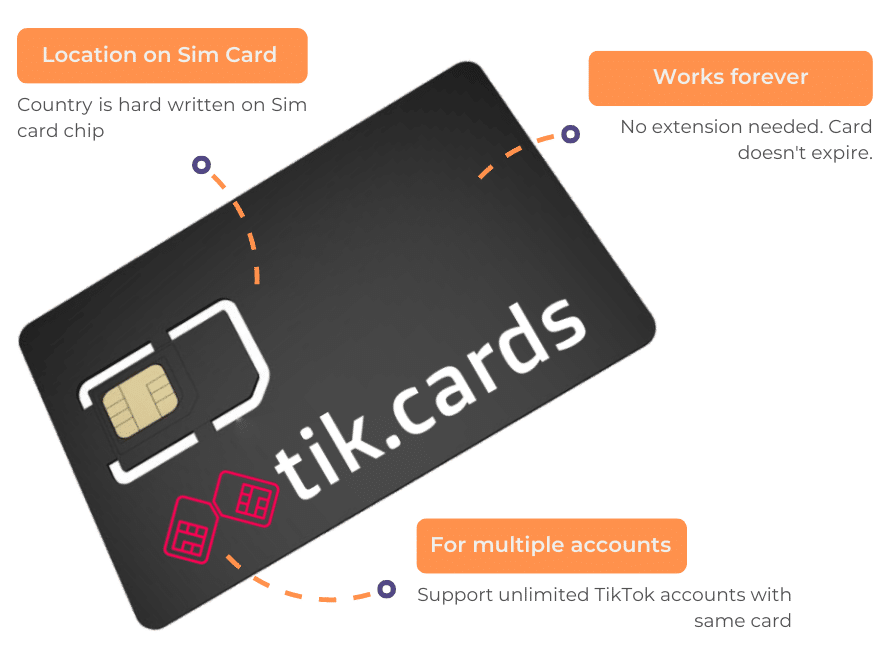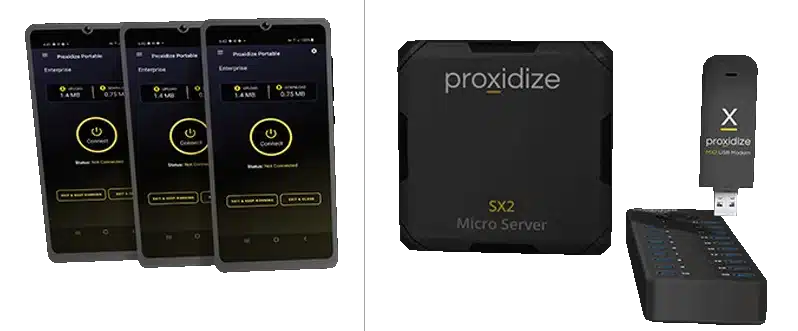How Technology can Shape Modern Elections Through Social Media Manipulation

Contents
Election campaigns have always been a battle for hearts and minds. In the past, this meant knocking on doors or running TV ads. But today, the arena is largely digital, with platforms like TikTok, Instagram, and Twitter becoming battlegrounds where opinions are shaped, minds are swayed, and ultimately, votes are cast. The scary part? Technology – when wielded unethically can amplify voices in ways that manipulate public perception.
As someone with a deep-rooted curiosity in how systems operate, I’ve explored this subject in-depth, even creating a proof-of-concept (POC) to better understand how such operations might function. Let me walk you through how bot farms and sophisticated setups can potentially influence elections and why it’s crucial to understand these dynamics.
The Anatomy of a Social Media Bot Farm

A bot farm is essentially a collection of automated accounts that mimic real users, interacting with social media platforms to create, amplify, or distort narratives.
Such a system can be implemented using Custom PC Units or Mobile Farm Units. The computers offer a highly flexible and scalable solution, allowing for tailored configurations to meet specific performance and reliability needs.
Mobile Farm Units provide a portable and cost-effective alternative, using a fleet of mobile devices such as smartphones or tablets to achieve similar objectives.

1. Hardware: Custom PC Boxes
To keep costs down and maximize efficiency, bot farms often rely on custom-built PC boxes. A typical setup might look like this:
- Processor and RAM: Multi-core processors (AMD Ryzen or Intel i5/i7) with at least 16GB of RAM to handle multiple virtual machines (VMs).
- Storage: SSDs for quick data processing.
- SIM Cards and Dongles: Dedicated SIM cards paired with USB dongles for mobile connectivity. This allows accounts to appear as if they are operated from different physical locations.
- Power Backup: Uninterrupted power supply (UPS) units to ensure 24/7 operation.
These machines are strategically placed across various locations to avoid detection by algorithms that track unusual activity.
If necessary, custom SIM cards with a specific country (United States, United Kingdom and more) pre-programmed into the SIM card chip can be ordered. One example of this service is Tik Cards.

2. Software Stack
- Virtualization Software: Platforms like VMware or VirtualBox are used to create multiple isolated environments on a single machine. Each VM operates as a separate "user," with its own IP address and operating system.
- Automation Tools:
- Custom Scripts: Python or JavaScript scripts are used to automate interactions like liking, commenting, and following.
- Third-party Automation: Tools like Selenium or Puppeteer can simulate human-like behavior, including random delays and varied interaction patterns.
- Anti-Detection Mechanisms:
- User-Agent Randomization: Scripts switch browser fingerprints (screen size, operating system, and browser type) to appear as different devices.
- Behavioral Randomization: Actions are programmed to mimic human behavior, such as scrolling, pausing, and clicking unpredictably.
3. Proxies and IP Management
Bot farms rely heavily on proxies to mask the origin of traffic. Common methods include:
- Residential Proxies: These use IPs assigned to real devices, making the bot traffic appear genuine. Providers like Luminati or Oxylabs offer these services.
- Rotating Proxies: Change IPs periodically to avoid detection.
- Mobile Proxies: Paired with the SIM cards mentioned earlier, these proxies make activity appear as if it's coming from smartphones.
There are also more advanced and professional solutions available, such as Proxidize. They offer a sophisticated proxy management service, allowing users to access high-quality, rotating proxies from a wide range of locations globally. With advanced features like geo-targeting, automatic proxy rotation, and customizable configurations, Proxidize is a top choice for users looking for a reliable and efficient proxy solution to maintain online privacy and bypass restrictions.

4. Content Strategy
To influence opinions, bot farms create engaging, divisive, or emotionally charged content. Here's how content is generated:
| Method | Example |
|---|---|
| AI-Generated Content | Text and images created with tools like ChatGPT or MidJourney. |
| Trending Hashtags | Bots latch onto trending topics to increase visibility. |
| Localized Content | Posts tailored to specific demographics, using slang or regional trends. |
For example, in a recent POC, I used geotargeting to generate memes with local slang to engage Romanian audiences on TikTok.
Technical Workflow
Let’s dive into the detailed workflow of a bot farm operation, breaking down every step from account creation to engagement and manipulation. This section outlines the entire process, providing a granular understanding of how technology can be used to influence elections.
Step 1: Account Creation
The first step is to create thousands of fake accounts that look and behave like real users. This involves:
- Virtual Environment Setup:
- Each account operates in a unique virtual environment (VM) to avoid correlation between activities.
- Tools used: VMware or VirtualBox.
- Configurations include randomized hardware IDs, screen resolutions, and device fingerprints.
- SIM Card Management:
- Each account is tied to a unique SIM card for verification (TikTok, for example, requires phone verification).
- Physical dongles or SIM card emulation software like GSM Modem Emulator are employed.
- Proxies for IP Masking:
- Residential Proxies: Bot traffic appears as if it’s coming from a genuine home network.
- Mobile Proxies: Add an extra layer of authenticity for platforms prioritizing mobile users.
- Automated Sign-Up Scripts:
- Programming Language: Python or JavaScript.
- Libraries: Selenium or Puppeteer to automate form filling, captcha solving, and account creation.
- Captcha Solving: Tools like 2Captcha or AntiCaptcha are integrated to bypass verification challenges.
- Profile Personalization:
- Randomized names, profile pictures, and bios are scraped from publicly available data to make accounts appear genuine.
- AI tools like ThisPersonDoesNotExist.com can generate realistic profile images.
Step 2: Content Generation and Posting
Once accounts are created, the next step is to generate and distribute content:
- AI-Powered Content Creation:
- Text Content: ChatGPT or fine-tuned models create compelling captions, comments, and replies.
- Visual Content: Tools like MidJourney or DALL·E generate images and memes that resonate with target demographics.
- Content Localization:
- Adjust content to reflect local trends, using slang, cultural references, or region-specific hashtags.
- Example: A POC in Romania tailored TikTok posts with "manele" music to engage local users.
- Scheduling and Distribution:
- Tools: Cron jobs or Task Scheduler manage post timing.
- Accounts post during high-traffic hours to maximize visibility.
- Anti-Detection Strategies:
- Randomized posting times and varied content types.
- Simulated user interactions like scrolling or pausing before posting.
Step 3: Engagement Workflow
The real power of a bot farm lies in engagement – likes, comments, shares, and follows amplify visibility and manipulate trends.
- Networked Interaction:
- Bots coordinate to interact with specific posts or hashtags, creating the illusion of widespread support.
- Tools like PyAutoGUI automate mouse movements and clicks for human-like interactions.
- Behavior Randomization:
- Scripts introduce delays between actions.
- Example Workflow:
- Scroll down a page for 30 seconds.
- Pause for 15 seconds.
- Like a post.
- Wait for a random time interval before commenting.
- Comment Strategy:
- Comments are tailored to appear genuine:
- Positive reinforcement for supported narratives.
- Subtle skepticism or trolling against opposing viewpoints.
- Comments are tailored to appear genuine:
- Data Analysis:
- Real-time analytics track post performance and adjust strategies.
- Tools like Google Analytics, Matomo (with API integrations) or custom dashboards visualize key engagement metrics.
Step 4: Scaling and Management
Once the workflow is proven, the system is scaled for maximum impact:
- Scaling Accounts:
- Clone the workflow across multiple machines.
- Utilize cloud-based VMs (AWS, Azure) for scalability and redundancy.
- Centralized Control Panel:
- Custom dashboards manage all bots in a unified interface.
- Features include:
- Account status monitoring.
- Bulk action execution (e.g., mass commenting).
- Proxy health checks.
- Distributed Locations:
- To avoid detection, physical setups are distributed across geographies.
- Remote Desktop Protocol (RDP) and VPNs connect and control these nodes.
Workflow Visualization
Here’s a simplified table summarizing the workflow:
| Step | Tools/Techniques | Purpose |
|---|---|---|
| Account Creation | Selenium, SIM Cards, Captcha Solvers | Generate fake accounts. |
| Content Generation | AI (ChatGPT, MidJourney), Scheduling Tools | Create and schedule engaging content. |
| Engagement | PyAutoGUI, Randomization Scripts | Mimic human-like interactions. |
| Scaling & Control | RDP, Cloud VMs, Custom Dashboards | Manage and scale operations efficiently. |
Example Workflow: Engaging with a Trending Hashtag
- Target Identification:
- Monitor trending hashtags (e.g., #Election2024).
- Use APIs like Twitter or TikTok's to scrape data.
- Bot Action Plan:
- Engagement Rate: 10% bots like posts, 5% comment, 1% share.
- Content: Pre-written comments like “I totally agree!” or “Important topic!” to blend in.
- Execution:
- Schedule actions using Python scripts.
- Proxies rotate every 10 interactions.
- Result Analysis:
- Monitor the hashtag's visibility and adjust bot behavior accordingly.
Case Study: Coordinated Engagement Using Bot Farms
Let’s imagine a hypothetical election campaign:
- Objective: Boost Candidate A’s popularity while undermining Candidate B.
- Execution:
- Building Credibility: Create fake accounts over months to gain followers and appear genuine.
- Engagement: Program bots to comment positively on Candidate A’s posts while spreading doubts about Candidate B.
- Amplification: Use "like bombs" to boost the visibility of favorable posts.
- Echo Chambers: Build private groups or chats where misinformation spreads unchecked.
Challenges and Countermeasures
While setting up a bot farm is technically feasible, several challenges arise:
| Challenge | Solution |
|---|---|
| Platform Detection | Use rotating residential proxies and human-like behavior patterns. |
| Account Bans | Automate the creation of backup accounts to replace banned ones. |
| Content Moderation Algorithms | Employ A/B testing to refine content strategies that evade detection. |
Cost Breakdown of Setting Up a Social Media Bot Farm
Setting up a bot farm to influence social media is a significant financial investment. The costs vary based on scale, infrastructure, and sophistication of the operation. Here's a detailed estimate of the key components involved in creating a mid-to-large scale bot farm, focusing on hardware, software, and operational expenses.
Hardware Costs
The hardware costs depend on the scale of the operation and the level of redundancy you want to build into the system. Here’s an approximate breakdown:
Custom PC Boxes:
Each bot farm node typically consists of a custom-built PC with multiple virtual machines running. These PCs need to be powerful enough to run several instances simultaneously, with hardware resources dedicated to each bot.
- CPU: AMD Ryzen 5 3600 (6 cores, 12 threads) – $200
- RAM: 32GB DDR4 (2x16GB) – $100
- Storage: 1TB SSD (for fast read/write speeds) – $80
- Motherboard, Power Supply, Case, Cooling: $150
- SIM Cards + USB Dongles for 4G Connectivity (per PC): $50 (SIMs) + $30 (Dongles) = $80
Total per PC Box: $610
For 100 nodes: 100 x $610 = $61,000
Backup & Redundancy:
To maintain 24/7 uptime, you’ll need backup power and redundancy. This includes Uninterrupted Power Supply (UPS) units and additional networking equipment.
- UPS Unit (for each PC box): $100
- Router + Switch Setup for Network Management: $200
- Backup Servers for Data Storage: $500 per server (2 servers needed)
Total Redundancy Setup per Node: $800
For 100 nodes: 100 x $800 = $80,000
Software Costs
Running a bot farm requires a variety of software tools to manage automation, create content, and handle anti-detection tactics. Here's a breakdown of the primary software expenses:
Virtualization & Automation Software:
- VMware or VirtualBox License (for VM management): Free for basic setups, but advanced features might cost up to $150 per license for each instance.
- Automation Tools: Open-source tools like Selenium and Puppeteer can be used for free, but custom scripts might require an experienced developer.
- Proxy Management Software (for rotating IPs): $300/month for services like ProxyMesh, Luminati, or Oxylabs.
Estimated Software Cost for a Medium-Sized Operation (100 nodes):
- VM and Automation Tools: $0–$1,500 (assuming use of some paid features)
- Proxy Management: $300/month x 12 months = $3,600
- Captcha Solvers (e.g., 2Captcha API): $500/month (depending on the scale)
Total Software Cost (1 year): $5,000–$10,000
Operational Costs
The operational costs consist of maintaining the hardware, managing infrastructure, creating content, and running the bot farm efficiently.
Electricity Costs:
Each custom PC consumes about 300W on average when running multiple virtual machines. Assuming each node is running 24/7, we can estimate the monthly electricity cost.
- Average Power Consumption per PC Box (300W):
300W * 24 hours * 30 days = 216 kWh per month per PC
Electricity Cost per kWh: $0.12 (average in the U.S.)
Monthly Cost per PC Box: 216 kWh * $0.12 = $25.92 per month
For 100 nodes:
100 x $25.92 = $2,592/month
Annual Electricity Cost: $31,104
Internet Bandwidth:
Each PC box will require a steady internet connection with decent upload and download speeds to interact with social media platforms without throttling.
- Dedicated Internet Connection (100 nodes): Assuming a minimum of 100 Mbps download/upload speed per box, you’ll need at least 10 Gbps total bandwidth.
Cost for 1 Gbps Business Internet Connection (100 nodes): $500–$2,000/month (depending on region).
Annual Internet Cost: $6,000–$24,000
Staffing & Maintenance:
Managing the bot farm requires developers, IT staff, and possibly content creators for the social media accounts.
- Salaries:
- Developer (for bot creation and maintenance): $60,000–$100,000/year (depending on region and experience)
- IT Maintenance & Network Admin: $50,000/year
- Content Creators (if outsourced): $40,000–$60,000/year (depending on scale and engagement required)
Total Staffing Costs (Annual): $150,000–$250,000
Proxy and SIM Card Management
Maintaining proxy and SIM card infrastructure is crucial to avoid detection by social media platforms. Using rotating residential proxies and mobile proxies ensures that each bot has a unique IP and remains anonymous.
- Residential Proxy Service (Luminati, Oxylabs): $1,500–$3,000/month for enough IP addresses to cover 100 bots.
- SIM Card and Mobile Proxies: Approximately $10–$15 per SIM card per month for mobile proxies. For 100 SIM cards, that's $1,000–$1,500/month.
Annual Proxy & SIM Card Cost (100 nodes): $24,000–$54,000
Total Estimated Annual Cost for a 100-Node Bot Farm:
| Component | Annual Cost |
|---|---|
| Hardware (PCs + Redundancy) | $141,000 |
| Software (Licenses, Proxies) | $5,000–$10,000 |
| Electricity Costs | $31,104 |
| Internet Bandwidth | $6,000–$24,000 |
| Staffing & Maintenance | $150,000–$250,000 |
| Proxy & SIM Card Management | $24,000–$54,000 |
Total Annual Cost:$357,104–$479,104
Running a bot farm at a medium-to-large scale (100 nodes) for manipulating social media and influencing elections is not a small investment. With a total cost ranging from $357,000 to over $479,000 annually, it’s clear that the resources required to build and maintain such systems are substantial. This doesn’t even account for ongoing expenses like content creation, account creation costs, and the potential for legal or reputational risks.
The Ethical Dilemma
When I built my POC, it was never with malicious intent. The aim was to understand the system so that it could be countered effectively. What I realized, though, is that these tools, in the wrong hands, can destabilize democracies. Manipulated trends and false narratives can divide societies, leaving lasting scars.
How Can We Fight Back?
- Improved AI Moderation: Platforms must invest in better AI models that detect patterns of inauthentic behavior.
- Stronger Regulations: Governments need to legislate against the misuse of such technologies while balancing privacy concerns.
- Digital Literacy: Educating users to recognize fake accounts and misleading content is vital.
Final Thoughts
Technology has the power to shape opinions at an unprecedented scale. While innovation brings exciting possibilities, it also presents unique challenges. My journey into creating this POC was both enlightening and alarming. It underscored the urgent need for awareness and action to ensure that elections remain fair and free from manipulation.
If you’re a technology enthusiast or a digital strategist, understanding these dynamics is no longer optional – it’s a necessity. As we embrace the digital age, we must also guard against the risks it poses to the very fabric of our societies.
What’s your take on this topic? Let’s continue the conversation in the comments. Together, we can explore solutions to safeguard the democratic process.



